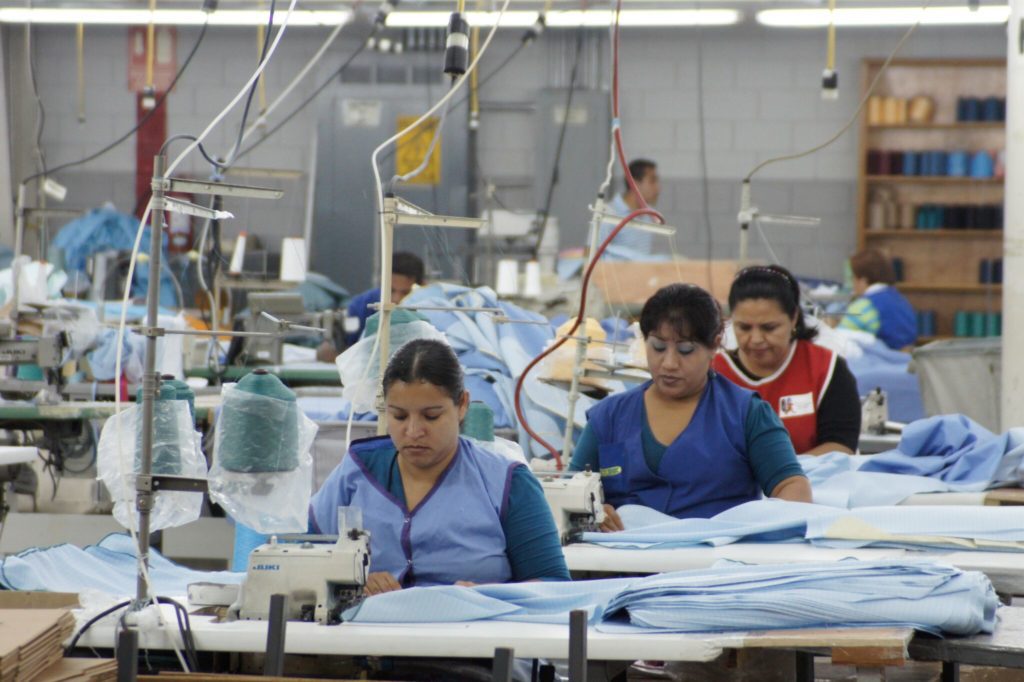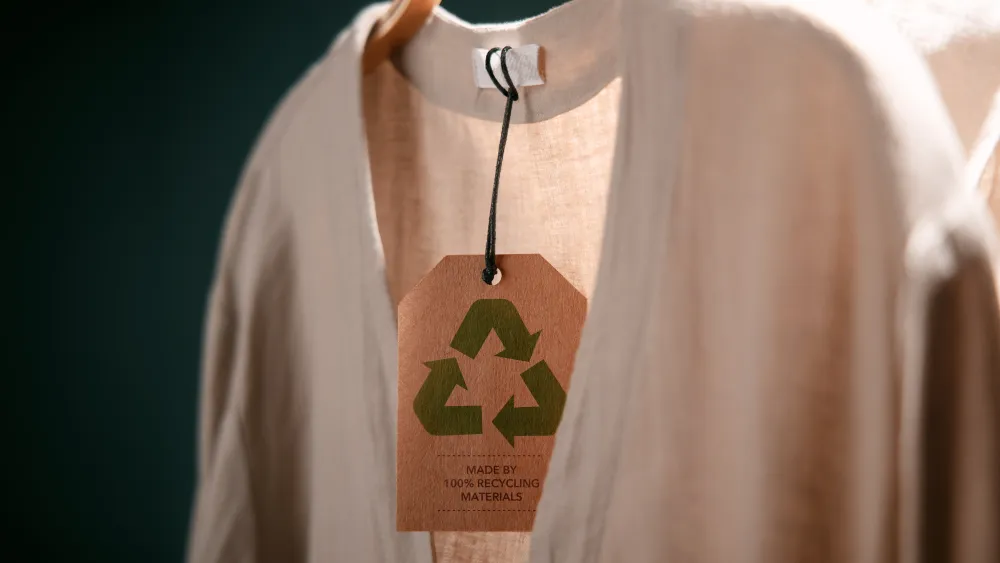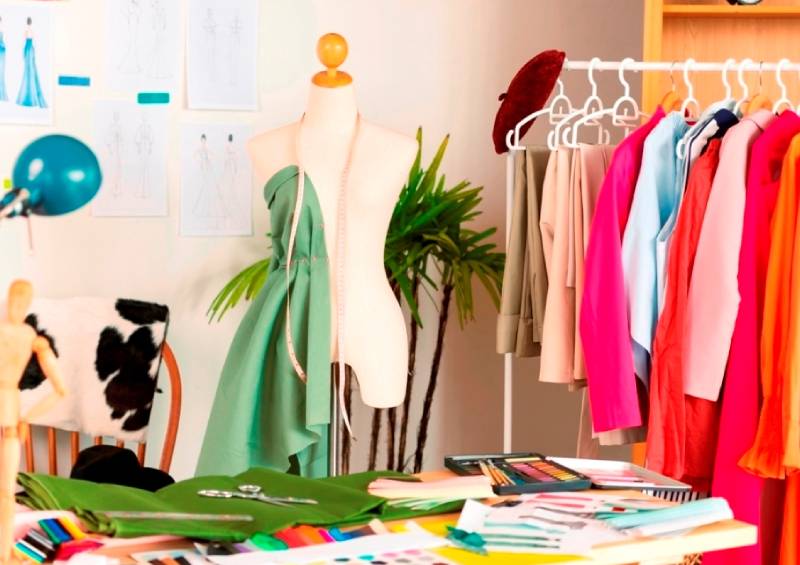FW
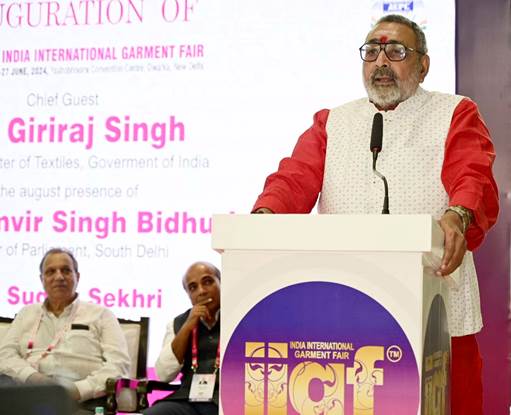
The 71st edition of the India International Garment Fair (IIGF) was inaugurated today by Union Textiles Minister Giriraj Singh in New Delhi. The event, graced by prominent figures including Member of Parliament Ramesh Bidhuri, AEPC Chairman Sudhir Sekhri, international buyers, and exhibitors, aims to boost the Indian garment and textile industry.
India’s economic growth and textile sector ambitions
In his inaugural address, Giriraj Singh highlighted India's rapid economic growth, with a GDP growth rate of 7.2 per cent, and projected it to become the third-largest economy by 2027-28. He attributed this growth to a supportive political environment and enhanced infrastructure, fostering a conducive business ecosystem.
Giriraj Singh highlighted the significance of the fair in global trade, noting with pleasure that around 600 buyers from over 50 countries are participating in this edition of the IIGF.
Goals for the Indian textile industry
Singh outlined ambitious targets for the Indian apparel and textile market, currently valued at $165 billion, aiming to reach $350 billion. He urged the industry to elevate apparel exports to $50 billion by 2030. Singh also stressed the importance of promoting technical fibers and geo textiles, sectors identified for significant growth potential by Prime Minister Modi’s roadmap.
Competing globally and domestic strengthening
The Minister expressed his vision for India to surpass China in textile exports, noting rising costs in Bangladesh as an opportunity. He advocated for the development of small clusters for minor players to enhance ready-made garment (RMG) exports. Additionally, Singh called for the revamping of textile parks and promoting green textiles to sustain growth.
Singh encouraged the adoption of the 'hub and spoke' model to boost domestic manufacturing and industry collaboration. He underscored the necessity of establishing strong Indian brands and announced plans to revive the Scheme for Integrated Textile Parks.
Address by AEPC Chairman and future outlook
Sudhir Sekhri, Chairman of AEPC, acknowledged the challenges faced by Indian apparel exports due to global economic headwinds but highlighted a recent 9.8 per cent increase in exports in May 2024. He expressed confidence in overcoming these challenges under the leadership of Prime Minister Modi and Minister Singh.
Mithileshwar Thakur, Secretary General of AEPC, noted the optimistic forecast by the IMF, with the world economy expected to grow at 3.2 per cent in 2024 and 2025, and global inflation projected to decline. Thakur urged the Indian apparel industry to capitalize on these opportunities and expand its global footprint.
The IIGF will feature knowledge sessions on June 25 and 26, covering topics such as global trade challenges, manufacturing excellence, and sustainable fashion. These sessions aim to equip industry stakeholders with insights and strategies for growth.
Collective efforts and fashion showcases
Organized by the AEPC through the International Garment Fair Association (IGFA), in collaboration with the Clothing Manufacturers Association of India (CMAI), Garment Exporters & Manufacturers Association (GEMA), and Garment Exporters Association of Rajasthan (GEAR), the fair exemplifies the collective effort and teamwork within the industry. The 71st edition will also host two daily fashion shows from June 25 to 27, showcasing premier collections from exhibitors.
The India International Garment Fair continues to be a pivotal platform for the Indian textile industry, fostering international trade relationships and showcasing India's manufacturing prowess.

Fast fashion's grip on the clothing industry may be loosening, as a growing movement – slow fashion – takes root. Fast fashion, with its emphasis on cheap, trendy clothes and frequent turnovers, has dominated for decades. However, a growing awareness of its environmental and social costs has led to the rise of slow fashion – a movement promoting ethical production, quality garments, and mindful consumption.
The rise of slow fashion, a measured emergence
Data suggests slow fashion is gaining traction. A Global Fashion Agenda 2022 Pulse Survey revealed that 63 per cent of fashion executives believe sustainability will be a key competitive differentiator within the next three years. This shift is driven by a growing consumer base concerned about the environmental and ethical impact of fast fashion. A McKinsey & Company report: states that 60 per cent of millennials are willing to pay a premium for sustainable products. . The rise of resale platforms like ThredUp (reportedly valued at $1 billion in 2021) and Patagonia's worn wear program further highlight a shift in consumer behavior.
Growth drivers: Ethics, environment in focus
Several factors fuel slow fashion's rise. Ethical concerns about garment worker rights and fair wages are a major motivator. The Rana Plaza garment factory collapse in 2013 tragically highlighted the dangers of fast fashion's exploitative practices. Exploitative labor practices in fast-fashion factories have been exposed, pushing consumers towards brands committed to fair wages and safe working conditions. Environmental consciousness is another key driver. A 2020 McKinsey report estimates the fashion industry is responsible for 10 per cent of global carbon emissions. Consumers, particularly millennials and Gen Z, are increasingly concerned about sustainability and are seeking eco-conscious alternatives. Patagonia, a leading outdoor apparel brand, exemplifies this shift. The company prioritizes recycled materials and encourages customers to repair worn-out gear, fostering a culture of mindful consumption. Also,slow fashion emphasizes well-made, timeless pieces that last longer, appealing to those seeking value over fleeting trends.
Challenges in slow fashion's growth
Despite its momentum, slow fashion faces hurdles. Higher production costs due to quality materials and ethical labor practices can translate to steeper price tags making it less accessible to budget-conscious consumers. Transparency throughout the supply chain is another challenge. Consumers need clear information about a garment's origin and production process to make informed choices. While awareness is growing, many consumers remain unfamiliar with slow fashion options or struggle to differentiate between genuine and performative sustainability efforts by brands. Moreover, fast fashion's dominance, aggressive marketing strategies, and convenience still pose a significant challenge.
The embrace of slow fashion varies geographically. Europe, particularly Germany and Scandinavia, leads the way, driven by strong consumer awareness and government regulations promoting sustainability. North America shows promise, with a growing market for eco-conscious brands. As per Grand View Research, the US market projected to reach $25.2 billion by 2025. However, regions like South Asia, where fast fashion's affordability holds strong appeal, may take longer to adapt. A growing middle class and rising awareness of environmental issues could lead to a shift in these regions.
Segment wise, luxury and premium have a higher profit margin, allowing brands to invest in sustainability initiatives more readily. Consumers in these segments are also more likely to prioritize ethical and environmental factors. The value segment presents the biggest challenge. While some affordable slow fashion brands exist, convincing budget-conscious consumers to pay a premium for sustainable clothing requires a shift in mindset and potentially, government incentives.
Womenswear has traditionally been a bigger driver of fashion trends, making it a natural leader in slow fashion adoption. Menswear and kidswear sectors are showing slower growth, possibly due to a more traditional focus on functionality and durability, which slow fashion inherently promotes. However, there's growing interest in sustainable options for these segments as well.
The future of slow fashion is promising. As environmental concerns escalate and consumer awareness grows, slow fashion is expected to continue its upward trajectory. Technological advancements in sustainable materials and production processes, coupled with government support and increased industry transparency, can further accelerate this growth. However, bridging the price gap and effectively communicating the value proposition of slow fashion remain key challenges.

The fashion industry is on the cusp of a major transformation, driven by a compelling need for transparency and sustainability. Enter blockchain, a revolutionary technology poised to reshape how clothes are made, distributed, and ultimately, consumed.
Tracing the Journey: From farm to final sale
One of the biggest challenges in fashion is a lack of transparency. Blockchain offers a solution with its secure and immutable ledger system. Every step of a garment's journey, from raw materials to finished product, can be tracked and verified. This empowers consumers to make informed choices about the clothes they buy and strengthens brands' commitment to sustainability. For example, Lectra's TextileGenesis partnered International Cotton Association to promote ethical trade and sustainability.
Combating counterfeiting
Counterfeiting is a multi-billion dollar problem, damaging brands and potentially posing health and safety risks. Blockchain can significantly reduce counterfeiting by creating a unique digital identity for each product. This allows for easy authentication and exposes counterfeit items. Aware Traceability Platform for example, offers a user-friendly solution for brands to implement blockchain in their supply chains.
Streamlining the supply chain
Fashion supply chains are complex, involving numerous stakeholders. Blockchain acts as a centralized platform, streamlining communication and data sharing. This translates to faster information retrieval, lower operational costs, and a more agile and responsive industry. Martine Jarlgaard pioneered the use of blockchain in fashion with garments featuring smart labels that recorded every step of the manufacturing process.
Early days, big potential
While the promise is undeniable, blockchain adoption in fashion is still in its early stages. Challenges include the cost of implementation, the need for industry-wide standards, and ensuring data privacy. Additionally, the fragmented nature of the industry and varying levels of digital readiness pose hurdles.
Industry collaboration is a must for blockchains success, widespread adoption requires collaboration among brands, suppliers, and retailers. Implementing blockchain can be expensive, especially for smaller companies with limited digital infrastructure.
The road ahead
Phased approach: Experts recommend starting small, focusing on tracing a specific product line or aspect of the supply chain.
Focus on practical applications: Focus on projects that address specific needs, such as ethical sourcing or counterfeit prevention.
Collaboration is key: Industry collaboration is crucial to overcome challenges and unlock the full potential of blockchain.
While blockchain is still in its early stages in fashion, it has the potential to be a game-changer. By embracing this technology, brands can become more transparent, sustainable, and efficient, ultimately benefiting the entire fashion ecosystem.
Embarking on a transformative journey, RSWM is expanding the capacity of its knitting unit besides embarking on other gradual capacity expansions. Having ventured the circular knitting fabrics market with an investment of Rs 80 crore, RSWM offers a range of innovative and high-quality knitted fabrics such as Single Jersey, Interlock, Rib, and Fleece at its new venture, LNJ Knits.
RSWM aims to capitalise on the $206 billion global knits market with its 4,800 mmtpa Banswara Plant in Rajasthan. It also aims to acquire an additional capacity of 4,300 mtpa.
The company has improved its denim division significantly and aims to further enhance the capacity of its division. RSWM also plans to foray into the garments segment and modernise equipment across all units. It has earmarked an investment of Rs 410 crore for these expansions.
In FY24, RSWM achieved net sales of Rs 4,057 crore. The company operates 12 manufacturing plants in Rajasthan, equipped with 6.25 lakh spindles, 172 looms, and 95 circular and flat knitting machines, ensuring high-quality textile production and timely global delivery. RSWM's annual production includes 1,21,000 mt of greige yarn, 24,000 mt of melange yarn, 32,000 mt of dyed yarn, 32 million meters of denim fabric, over 9,000 mt of knits fabric, and 43,000 mt of green fiber. The company employs over 10,000 skilled workers across its facilities.
The 99th edition of renowned trade show specialising in children’s and junior clothing, accessories lifestyle and networking, Pitti Bimbo attracted over 1,000 buyers, with 48 per cent coming from abroad, representing more than 50 countries.
Held at Florence's Fortezza da Basso from June 19-21, 2024, the show also attracted over 160 Italian and international exhibitors, more than 1,000 global distribution operators. It provided several new networking opportunities for buyers, media, professional trainers, trend promotions and individual proposals, notes Agostino Poletto, Director, Pitti Immagine.
The event also registered foreign buyers from the UK, USA, China, and Spain, along with high-level buyers from the Emirates, Saudi Arabia, and Kuwait.
The show reflects the sectoral transformations in the Italian and European markets that are currently witnessing a decline in domestic consumption and independent multi-brands stores.
They are instead witnessing an emergence of new retail chains, adds Poletto. To continue supporting high-quality and innovation production in the industry, the show needs to continue evolving, he emphasies..
Scheduled for January 2025, Pitti Bimbo's 100th edition will introduce these evolutionary changes with an aim to reaffirm the show's pivotal role in the industry.
Marking its 50th anniversary, global textile manufacturer and designer of commercial, hospitality, and residential fabrics, Camira, has increased the percentage of textile-to-textile waste in its popular recycled polyester fabric, X2.
Originally launched in 2012, X2 now contains 25 per cent textile-to-textile recycled polyester, along with 75 per cent post-consumer recycled polyester from plastic bottles.
With less than 1 per cent of textiles worldwide being recycled into new products, and a staggering amount of clothing sent to landfill every seven minutes, Camira’s efforts are timely and impactful. By using discarded textiles from the apparel industry, as well as yarn and fabric from its own waste streams, Camira has pioneered the latest iteration of X2 to make an even bigger impact, reducing its carbon footprint and showcasing the infinite opportunities of textile waste as a valuable resource.
Lynn Kingdon, Head-Creative, Camira, states, X2 is Camira’s first 100 per cent recycled textile to include closed-loop post-industrial content from its own textile yarn remnants and selvedges. Comprising 33 dynamic colorways with 14 new shades, X2 is designed for hybrid spaces, including commercial, hospitality, and residential interiors. Suitable for seating, panels, curtains, and drapery, the fabric provides excellent stretch, flammability, and abrasion performance.
X2’s new color palette embraces warm berry tones, cool blues, mauves, and turquoises, as well as subtle earthy shades, providing a color scheme for every interior. Comprising textile-to-textile waste, the black base yarn in X2 creates a textured grey mélange effect, reminiscent of high-end wool, adding surface appeal and dimension.
Textile Minister Giriraj Singh unveiled the government's plan to expand the Rs 10,000 crore Production Linked Incentive (PLI) scheme to include the garment sector. This announcement was made at the currently in-progress India International Garment Fair (IIGF). The move will help boost domestic textile manufacturing and exports, he added.
Highlighting the industry’s potential to increase textile exports. Singh urged it to target shipments worth $50 billion in the coming years. Emphasising on adoption of the 'hub and spoke' model to strengthen domestic manufacturing, he encouraged the industry to collaborate, and establish new Indian brands. He also announced plans to revive the Scheme for Integrated Textile Parks (SITP) to create internationally standardised parks. All these initiatives will help revamp textile parks in the country, and promote green textiles, thus bolstering the industry’s growth and sustainability.
Introducing the new initiative launched by the Cotton Corporation of India (CCI) to enhance transparency in cotton traceability in India, Lalit Kumar Gupta, Managing Director, announced that henceforth each cotton bale will include a QR code providing detailed information about the fiber. The announcement was made at the third meeting of the Committee on Cotton Production and Consumption (COCPC) for the Cotton Season 2023-24, held in Mumbai.
The QR code will offer traceability for each bale, including the village of procurement, the factory where it was processed, and the date of sale, explained Gupta. This initiative will boost transparency and build trust within the cotton supply chain, he added.
Chaired by Roop Rashi, Textile Commissioner, the meeting was attended by representatives from the central and state governments, the textile industry, cotton trade, and the ginning and pressing sector. It dwelled on the various aspects of the cotton scenario, such as state-wise area, production, import, export, and consumption.
In a post-meeting press conference, Rashi assured that the industry would have sufficient raw material availability. She highlighted the rise in cotton consumption that marked the second highest consumption in the last decade.
According to COCPC, total cotton supply for the current 2023-24 season, ending September 30, is estimated at 398.38 lakh bales of 170 kg each. This includes an opening stock of 61.16 lakh bales, production of 325.22 lakh bales, and imports of 12 lakh bales. In comparison, the previous season's total supply was 390.68 lakh bales, with an opening stock of 39.48 lakh bales, production of 336.60 lakh bales, and imports of 14.60 lakh bales.
The closing balance for the current season is expected to decline to 47.38 lakh bales from 61.16 lakh bales last season. Total demand is projected to increase to 351 lakh bales this season from 329.52 lakh bales last year. Notably, exports are anticipated to rise from 15.89 lakh bales to 28 lakh bales this season.
Nike is expected to report its slowest revenue growth in two years in its soon-to-be announced fourth-quarter results. Nike's revenue is expected to increase by only 0.2 per cent Y-o-Y to $12.85 billion during the quarter, according to LSEG data. Analysts on average expect Nike's adjusted earnings to grow by 26.4 per cent to 83 cents per share from a year earlier.
The brand attributes this slowdown to a lack of innovation and increased competition from emerging brands like Deckers' Hoka and Roger Federer-backed On.
Despite the challenges, Nike is banking on the upcoming Olympic Games in Paris to regain some market share. The company plans to spotlight performance products like the Alphafly 3 racer and the Pegasus running shoe during the event.
Nike's recent focus on its direct-to-customer business, moving away from wholesale, has not yielded the desired results, worsening its demand issues. In March, company executives announced plans to double down on wholesale partnerships to boost sales.
As of May 25, On's market share in the footwear category at retailer Dick's Sporting Goods had risen to 12 per cent from 8 per cent in January, while Hoka's market share increased to 13 per cent from 8 per cent, according to YipitData. Meanwhile, Nike's market share at Dick's Sporting Goods fell to 32 per cent in May from 39 per cent in January.
The rising popularity of these upstart brands, especially in the running category, has also prompted Nike to implement a $2 billion cost-saving plan over three years. This plan includes scaling back on key sneaker lines such as the Air Force 1 shoes.
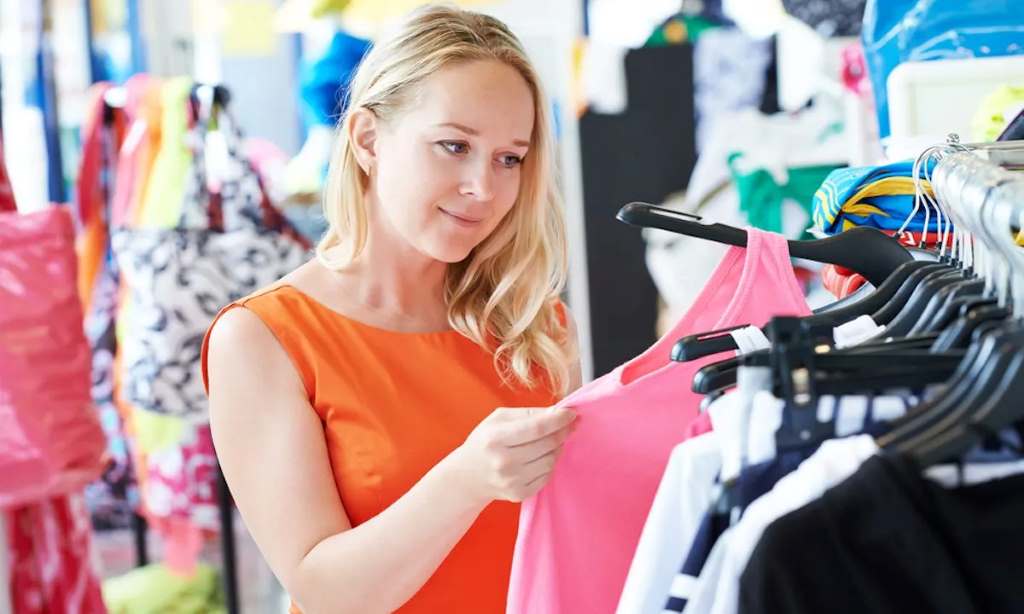
Robert Antoshak, a consultant for the global apparel industry presents a mixed outlook for the US apparel market, acknowledging recent improvements while highlighting ongoing concerns. In a United States Fashion Industry Association (USFIA) webinar featuring him, Antoshak highlights signs of recovery while acknowledging ongoing challenges.
Recovery signs
Antoshak outlines several tell tale signs of recovery.
Imports on the rise: After a pandemic-induced slowdown, apparel imports are climbing again, with China regaining its position as the top supplier. This suggests a renewed demand for clothing in the US.
Inventory levels stabilize: Retailers are successfully managing their stock, with nagging inventory gluts subsiding. This is further underscored by a healthy inventory-to-sales ratio, which has returned to pre-pandemic levels.
Consumer spending up: Apparel sales have grown, with the inventory-to-sales ratio returning to pre-pandemic levels.
Lingering issues
However, despite the positivity there are several lingering issues. One major one is shifting consumer preferences. The data reveals a curious trend in product categories while sales are up the product mix has changed, with a trend towards casual wear.
Several external factors can significantly impact the market's trajectory. These include inflationary pressures. Overall inflation is a concern, though apparel price increases have been modest so far. Consumer sentiment and confidence has dipped slightly after a period of optimism. Disposable income growth has slowed in recent months. Also, the US population is skewing older and heavier, potentially affecting clothing needs.
Market forecast
Uncertainty reigns: Antoshak presented a range of forecasts, acknowledging the difficulty of predicting the market's trajectory due to numerous external factors.
Government policy: Trade agreements, tax regulations, and environmental standards are all areas of potential concern.
Geopolitical tensions: The ongoing situation in Ukraine and tensions between the US and China could disrupt supply chains and raise costs.
Technological advancements: Advancements in areas like artificial intelligence and online retail could significantly impact the industry.
Competition heats up: The market is becoming increasingly competitive, with new business models like hyper-fast fashion emerging.
Shipping challenges: Rising fuel costs, geopolitical instability, and stricter customs enforcement could complicate global apparel trade.
The bottom line is recovery is on the horizon, but patience is required. The US apparel market shows signs of progress, with sales rising and inventories under control. However, a full recovery hinges on navigating various challenges. Antoshak concludes with a cautiously optimistic outlook, stressing that the market's future health depends on multiple evolving factors.



